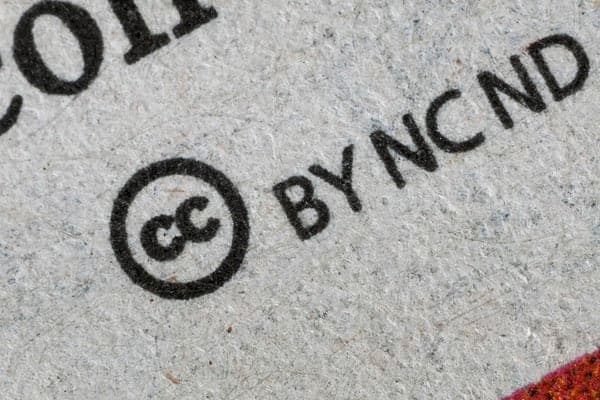Is the internet killing copyright?
The internet age means that anyone can create a perfect digital copy of any intellectual property available on the web. And millions of people frequently do. Jonathan Crossfield explores the business ramifications of online copyright infringement.
February 2007. Amazon began emailing customers to announce a new book from Seth Godin. Godin is a bestselling author, so new releases are big news to his fans. The problem was, Godin had published Everyone is an Expert as a free ebook available from his website, not in hard copy.
Godin tried to clarify the situation on his blog. “I didn’t authorise this book to be published, I have no idea who the publisher is and I certainly didn’t ask Amazon to email, anyone,” he said.
September 2007. At a concert in Sydney, Nine Inch Nails frontman Trent Reznor stopped between songs to recommend to audience members how they should respond to the high price of music in Australia:
“Steal it. Steal away. Steal, steal and steal some more and give it to all your friends and keep on stealing. Because one way or another, these motherf___ers will get it through their head that they’re ripping people off and that’s not right.”
Strong stuff. Of course, Reznor wasn’t promoting shoplifting or piracy. He was encouraging illegally sharing files through the BitTorrent peer-to-peer network.
The internet has created the greatest information database and distribution system society has ever known. But this power comes at a cost. Putting an intellectual property on the web makes it accessible to anyone with a laptop and a phone line. Yet the ability to copy, duplicate, reuse and redistribute this content without our knowledge makes the internet the biggest ever threat to current business practices and the protection of copyright.
The internet is changing how society communicates, compiles, stores and shares information. The development of new consumer attitudes – either knowingly or unwittingly infringing copyright in everyday online activity – has pitted businesses against their own consumers. Can current business models survive in this new marketplace?
Consumers, not pirates
Godin admits he was partially at fault for the unauthorised publication of his book. He published it under a creative commons licence to detail the copyright restrictions he wanted to impose on his work. Godin’s goal was for the e-book to be shared freely online. However, he failed to prohibit unauthorised commercial publication. Soon after Godin first announced his displeasure, the publisher responded to his concerns by adding a large disclaimer to the front cover of the printed version to declare the original source of the material.
Godin was lucky the publisher cooperated. Every day, intellectual property theft occurs on the web in large and small ways. Right-clicking an image for reuse on your website can infringe on someone else’s commercial rights. Copying and redistributing content without correct attribution is also a major concern for many webmasters. Plagiarism is more prevalent now than ever before.
This is not an article about backyard pirate DVD operations churning out cheap knock-offs. It also isn’t about the penalties consumers face or the legal debates regarding whether ISPs, businesses or consumers should be responsible for illegal downloading. These separate issues can detract from the core issue at stake for business. This article is about how modern consumers are choosing to access content online, often copying and redistributing among their peers, and what this means for the future of online business.
The battle for copyright
The debate about online copyright infringement usually surrounds CDs and films. However, the issues that surround peer-to-peer file sharing point to societal behaviours and beliefs that have ramifications across all online media.
“There seems to be an expectation that copyright law will change rather than businesses adapting into the new environment and using copyright in new ways,” says Ian MacDonald, senior legal officer for the Australian Copyright Council. He sees online copyright infringement as a problem for businesses, rather than lawyers. “I really don’t think they’re going to wind back copyright in principle as a law, just because people are infringing. If anything, laws have become more stringent rather than being relaxed.”
This places the responsibility for dealing with the issue of copyright infringement squarely with businesses and their financial models. Fight consumers in the courts or adapt.
“In Australia, one of the influences on copyright infringement is music pricing,” says Alex Malik, a PhD student at the University of Technology, Sydney who has studied the shift in online consumer behaviour. “There is no justification for iTunes’ $1.69 single download price compared to a US price of $0.99 or less when the Australian currency is virtually at parity. With new technology, the cost of producing content has also fallen dramatically in recent years. Consumers are not stupid – they are waiting for at least some of these cost savings to be passed onto them.”
In other words, Reznor’s controversial endorsement of illegal downloading reflects genuine consumer concerns. But is the price the only issue? Are other factors contributing to consumer behaviour?
Sabine Heindl represents Music Industry Piracy Investigations, an organisation that helps the Australian music industry enforce its intellectual property rights and is heavily involved in educating consumers on the realities of illegal downloading.
“All the research we’ve done suggests that kids now think music is free. Even if the music was 10c a track or if they were asked to pay $10 a month, they still have an issue because they’re paying.”
This perception that online content is free, or should be, includes all forms of digitised information. The challenge for business is to prosper in an environment where content can be copied easily and distributed without the owner’s consent.
Many businesses argue that the existing financial models are worth fighting for and that consumers need to be educated against perceiving content as free.
“Ultimately it comes down to a respect for creativity,” explains Heindl. “If people have created music, they don’t want it to be distributed by third parties on the internet without their consent. Their wishes need to be respected. In many ways that is the backbone of our society.”
Others advocate change. “This issue is not about piracy: this is about the audience getting whatever it wants by any means necessary,” says Mark Pesce, a writer, researcher and lecturer at the Australian Film, Television and Radio School, specialising in the future technology.
“Today’s consumers have the tools, they have the intent and they have the power of numbers. It is foolish to insist the future will be substantially different from the world we see today. We cannot change the behaviour of the audience. Instead, we must all adapt to things as they are.”
Pesce has closely monitored courtroom battles and technological developments over the years since legal pressure forced the closure of Napster.
“The recording industry turned out to be its own worst enemy because it turned a potentially profitable relationship with its customers into an ever-escalating arms race of file-sharing tools, lawsuits and public relations nightmares,” he says.
This is a battle between business and consumer behaviour. One of the other will need to change to achieve the best this new online marketplace has to offer.
From consumer to distributor
Any form of digital information, including images, web-design templates and text, can be copied, shared and reused. We all receive emails every day from friends we barely talk to in real life, containing funny images, interesting news stories or useful attachments. Often, the original source of these images is lost. Who knows who originally uploaded the video clip or who created the cartoons distributed around office email or posted on Facebook pages every day? After passing through thousands of hands in an email chain spanning the globe, the urge to share online content has spread someone else’s creativity far beyond their own control.
“The internet completely contradicts this concept of copyright,” says Larry Bloch, chief executive officer of Netregistry. “It is an enabling technology for the free and virtually instantaneous sharing of information and content while copyright restricts those same activities.”
The internet was initially created to share information between university computers across the country – shared information and mass distribution were at its core from the beginning. The internet has become a social, rather than individual, activity and these online relationships are fuelled by the sharing of content and ideas.
Whenever you market or provide content to an individual, you are in reality communicating with a much larger group. The individual’s membership of his or her online social circle relies on sharing information with peers; swapping ideas, opinions and content for the growth of the group. People place their favourite links on Facebook pages, add images to websites, submit content to bookmarking sites or share videos on YouTube.
If you try to turn the internet into a one-way portal like television or newspapers, it loses all-purpose and power. To get the most out of the internet you must give to receive, harnessing consumers’ motivation to share and distribute freely.
“Business can accept that some copyright infringement is inevitable or make sure they realise the legal consequences of challenging consumers in court,” says Bloch. “It becomes a balancing act. Musicians want their music to be heard but they also want to be paid. Finding a way to achieve both those goals while accepting the way consumers use the internet is the biggest challenge new artists face.”
People consume, interact and research differently. The technology now available gives every person with a laptop, a broadband connection and some free software the ability to broadcast material to a worldwide audience. This transformation from passive consumer to active participant has the potential to radically transform online business. The media consumer-distributor is a reality, one that shows no signs of going away.
“A lot of our education about copyright now is going into schools,” explains Heindl. “We have a generation of children who don’t even think it through when they download copyrighted material. There’s no ethical decision. I can’t see the industry flourishing in the future if that continues.”
Pesce disagrees. “There is no conceivable way the current models of film and television production and distribution can survive in this environment. This is an uncomfortable truth, but it is the only truth on offer.”
Business models of the future
The music industry’s heavy-handed reaction to digital distribution has drawn a great deal of criticism.
“I’m not sure any industry has dealt with the internet any better than the music industry,” claims Heindl. “It created a number of wonderful opportunities, but at the end of the day, you’re trying to compete with a model where people are giving away your content for free.”
In May 2008, Nine Inch Nails announced the new album The Slip would be available for free download from its website in a number of high-quality formats. The album was released under a “creative commons attribution, non-commercial share-alike” licence, encouraging fans to “remix it, share it with your friends, post it on your blog, play it on your podcast, give it to strangers”. As of writing, the album has been downloaded over 1.5 million times from the website, with many more downloads across BitTorrent networks.
When the CD version arrived in stores in July, sales were healthy and the album debuted in the Top 20. Even though the album was available for free download, some fans still bought the physical CD.
“Bands like Radiohead and Nine Inch Nails demonstrate the opportunities for the recording industry,” says Malik. “It takes a holistic approach where sound recordings, merchandise and concert tours are all about supporting the fans and building brand awareness.”
Creative commons allows any copyright holder to specify how they want their content to be used. Should someone press copies of Reznor’s album for unauthorised sale, he would still be able to take legal action. Meanwhile, consumers are free to distribute and share their music however they choose. But Heindl is not convinced.
“Creative Commons is welcome because it clarifies how people are happy for their work to be used,” she says. “But the feedback we get from artists, particularly up and coming artists, is that it’s just not applicable to them because they want to get some sort of remuneration for their works.”
The idea of direct financial reward built into any distribution model threatens to snap under this internet wind of change.
“Content owners should understand the internet is a compromise between a widespread distribution and copyright,” suggests Bloch. “It forces copyright holders to look beyond the purely financial value of their content and factor in the brand awareness, popularity and high visibility that may produce a return in other ways.”
The key is to think strategically about any intellectual property you place online. Even offline materials that can easily be digitised and uploaded, such as CDs, require consideration. Some copyright infringement is almost inevitable, even if it is someone innocently copying your image to decorate an email. Balance the pros and cons of uploading content against rigorously enforcing copyright. How much exploitation can you afford to accept to access the benefits of the web?
McDonald has advice for any business considering what to risk online.
“Look at the websites for KFC and Coca-Cola,” he says. “They both feature plenty of copyrighted content – video, copy and images, for example. What you don’t find on those sites are the trade secrets of what the eleven herbs and spices are or the recipe for Coke. So if there is something which is valuable in your business, it goes back to strategically planning not to put it up there.”
###
Jargon translator
- BitTorrent: A file-sharing technology developed in 2002, which allows the digital information of a file to be broken into pieces and shared out among downloaders. These downloaders then source the missing pieces from others in the network before the software assembles the file back together.
- Copyright: The legal rights that apply to any intellectual property – such as music, images, writing, art or documents – which are enforced in varying ways across different countries.
- Creative commons licence: Developed in 2002, creative commons is a flexible form of copyright designed to provide choices for the creator on exactly which protections they want and how they wish their property to be treated.
- ISP: Internet service provider.
- iTunes: Apple’s online music store, launched in 2004 in reaction to consumer demands for access to music online.
- Napster: The first major peer-to-peer network that started the trend of illegally downloading music. It was shut down by legal action in 2001.
- Peer to peer (P2P): A digital distribution model where networks of people upload and download content to each other.






